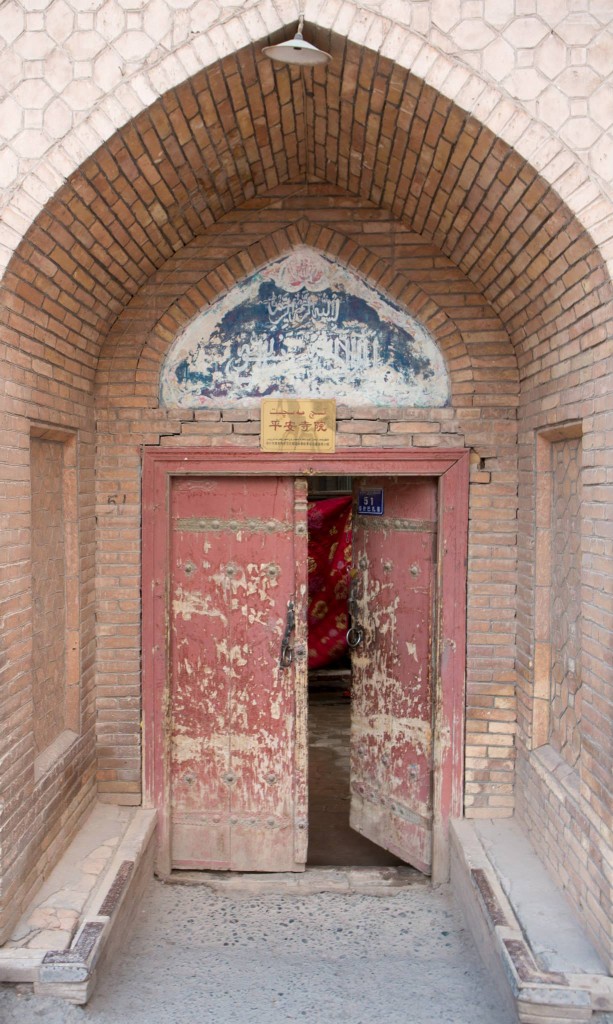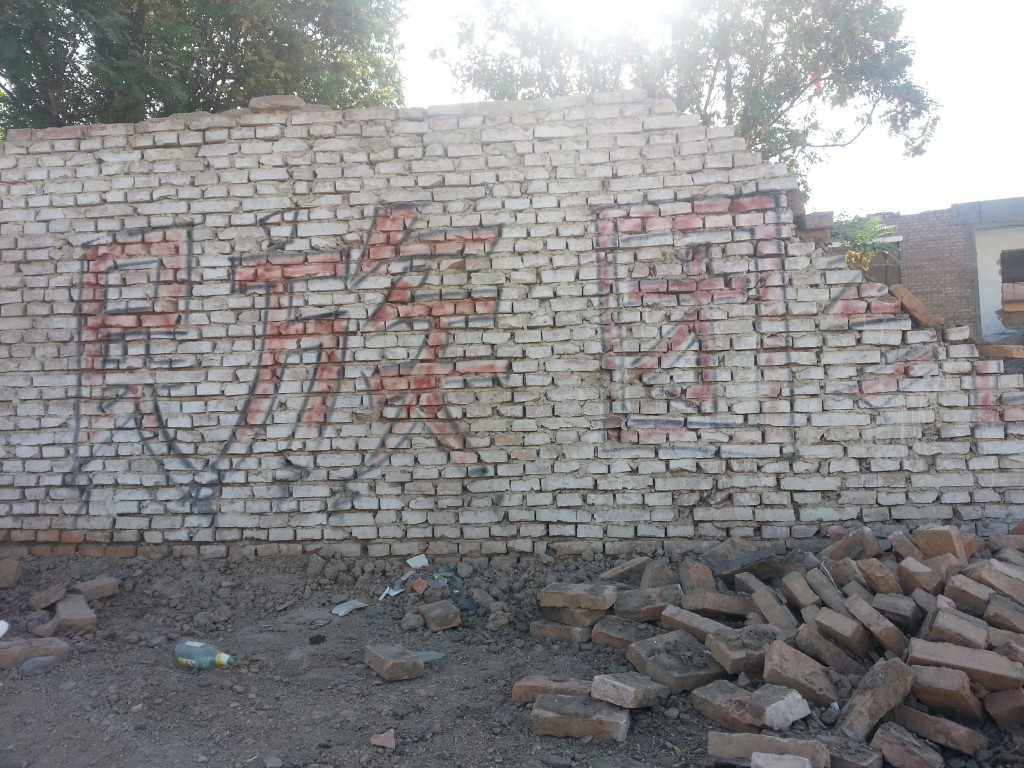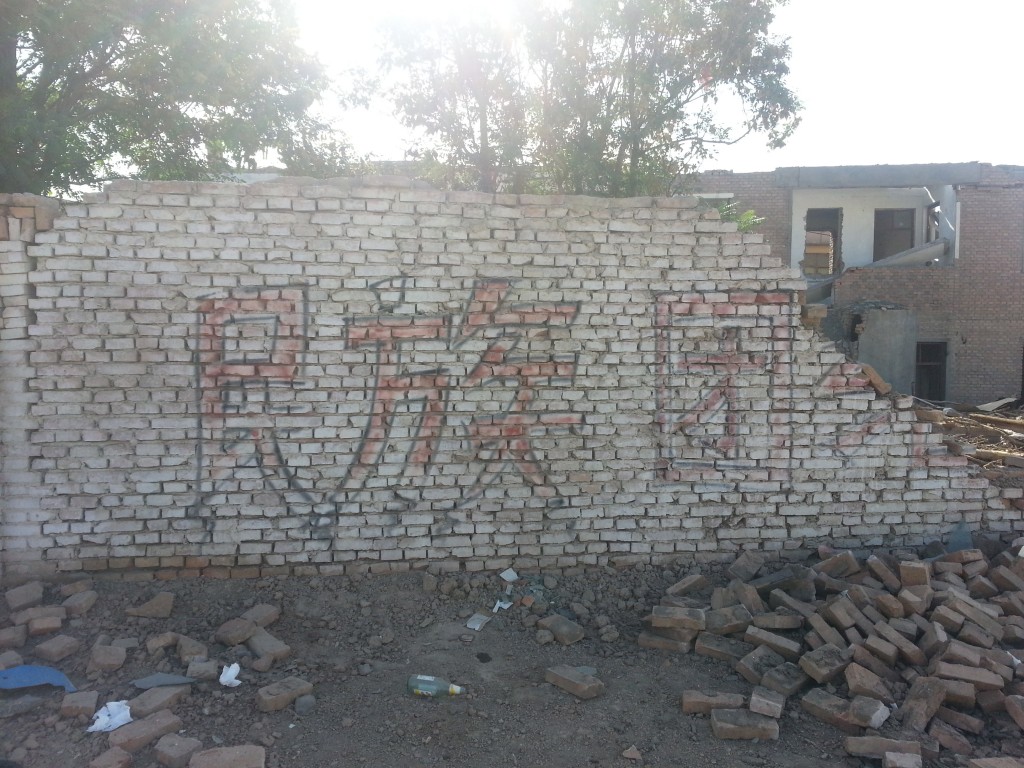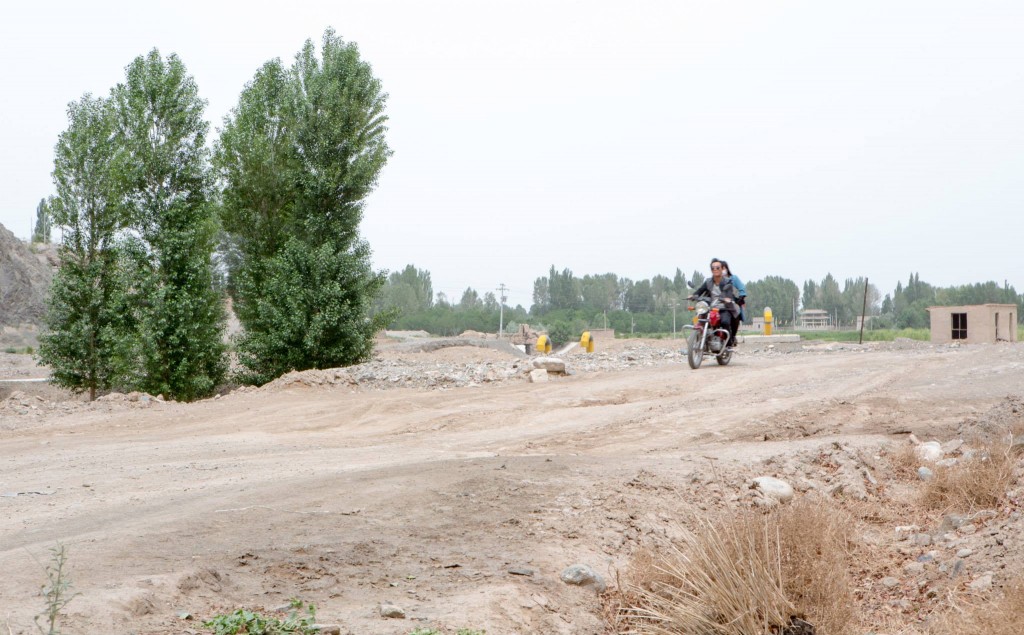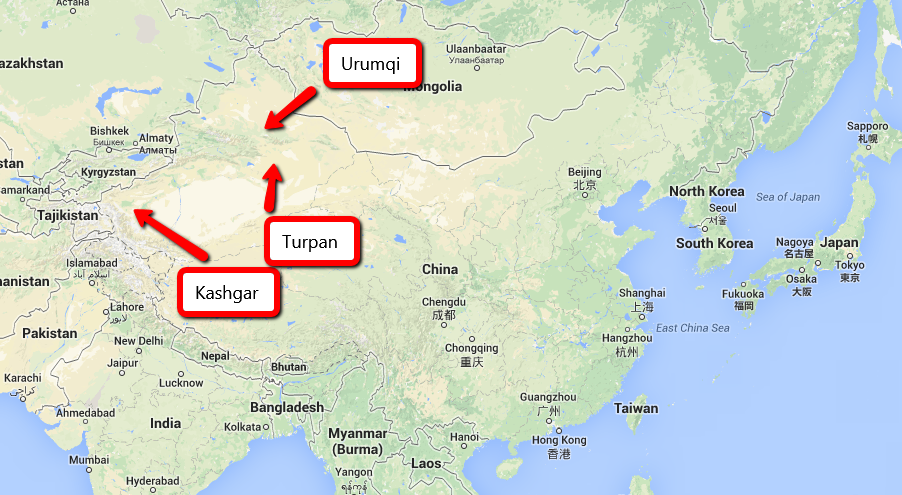
Kashgar.
Something about that name rings of the end of the earth. Like Kathmandu or Patagonia, the city’s name is redolent of a wild and ancient greatness that leaves me wondering why it has not yet been appropriated as the name of a clothing company, as the other two names have.
Kashgar is the epitome of the Silk Road. It is on the way to nowhere, yet in between everywhere. Kashgar has been a trading entrepot from time immemorial. The economic importance of Kashgar begins with its location. Coming from the interior of China, the Silk Road splits into two branches near Dunhuang, slipping around the Taklimakan Desert which, for the most, part is impassible. We had taken the northern route of the Silk Road, along the southern edge of the Tianshan Mountains and the northern rim of the Taklimakan, passing through Turpan and, with a short side trip, Urumqi.
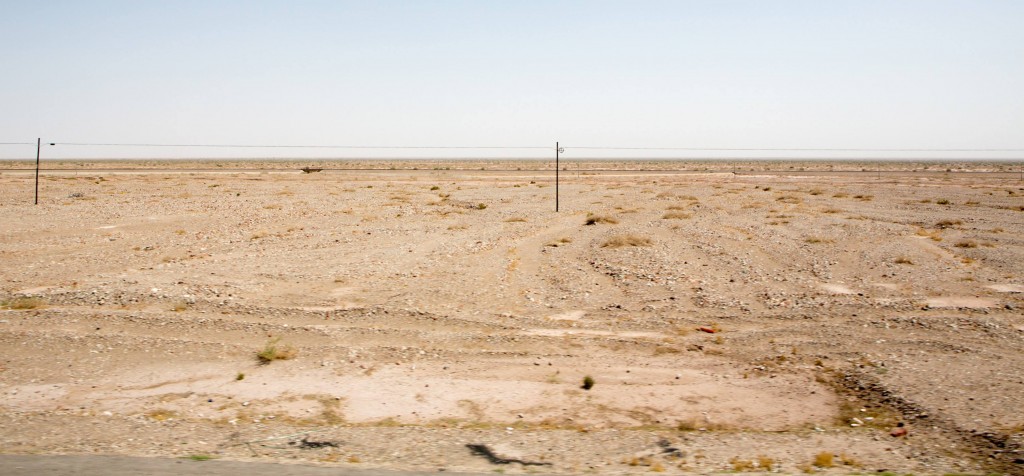
Taklimakan Desert
Another route passed south of the Taklimakan, tracing along the southern rim of the Taklimakan and the northern edge of the Kunlun Mountains. Here, the desert Uighurs are only a handful of miles from the Tibetan world, but the towering mountains make communications difficult.
Kashgar is at the western end of the Taklimakan, where the two routes of the Silk Road meet back up. Northeast of the city are the Tianshan Mountains, southeast are the Kunluns, and the Pamirs loom off to the West, along with the Stans: Kyrgyzstan, Tajikistan and Kazakhstan. South of Kashgar, along the Karakorum Highway, the world’s highest highway, are Afghanistan and Pakistan.
In part, trade and the bazaar culture have defined Kashgar because for hundreds of miles on most sides of the city, there is nowhere else to build a city. Mountains wrap two-thirds of the way around the city and desert takes the other third. So, for thousands of years, anyone who wanted to buy anything in that part of Central Asia had to go to Kashgar.
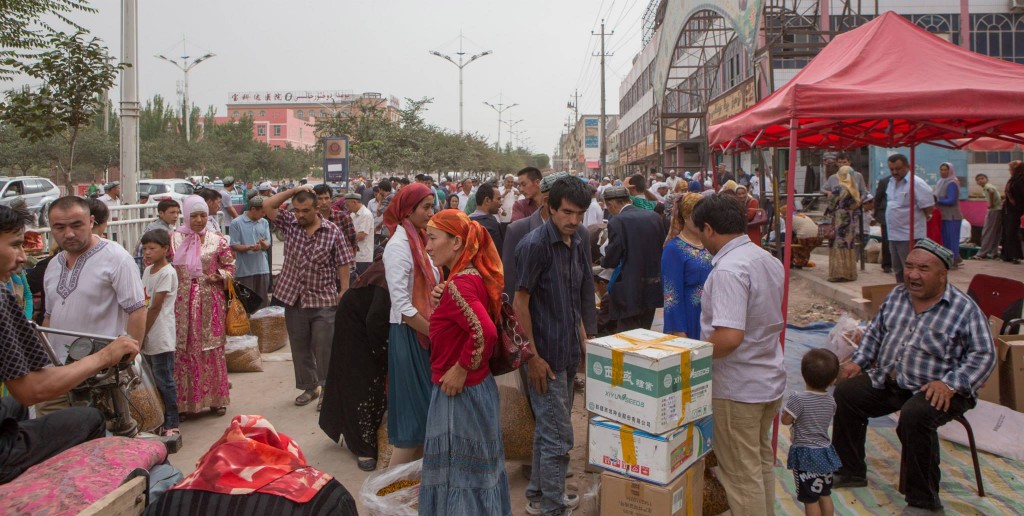
Kashgar’s Bazaar
Kashgar is also a fount of Uighur civilization. In Urumqi, many Uighur restaurants and shops advertise that they are of the Kashgar style. Many ancient Uighur leaders in arts and religion have come out of Kashgar and, unlike Urumqi or even Turpan, Kashgar is the only major city in China dominated by Uighurs.
Just looking at the map, it is easy to see why; Kashgar is just so far away from China. Even today, with travel relatively convenient and safe, few Han Chinese want to move out that far away from their families in the interior of China, so it is hard for the government to encourage migration.

With so many invaders, the gene pool is very heterogeneous.
Kashgar has fallen under the control of so many different groups that it is hard to place historically. The city was captured and recaptured several times by Chinese dynasties, the Han Dynasty, the Tang Dynasty and the Qing Dynasty. The Mongols took control of it (though, not the Mongols who ruled China). The conquering Arab armies even marched this far east as they were swarming out of the sands of Arabia, though they only briefly passed through the area. More recently, Kashgar was one of the hottest spots for the Great Game, the shadow battle fought between the Russian and British Empires for dominance of the Asian continent.
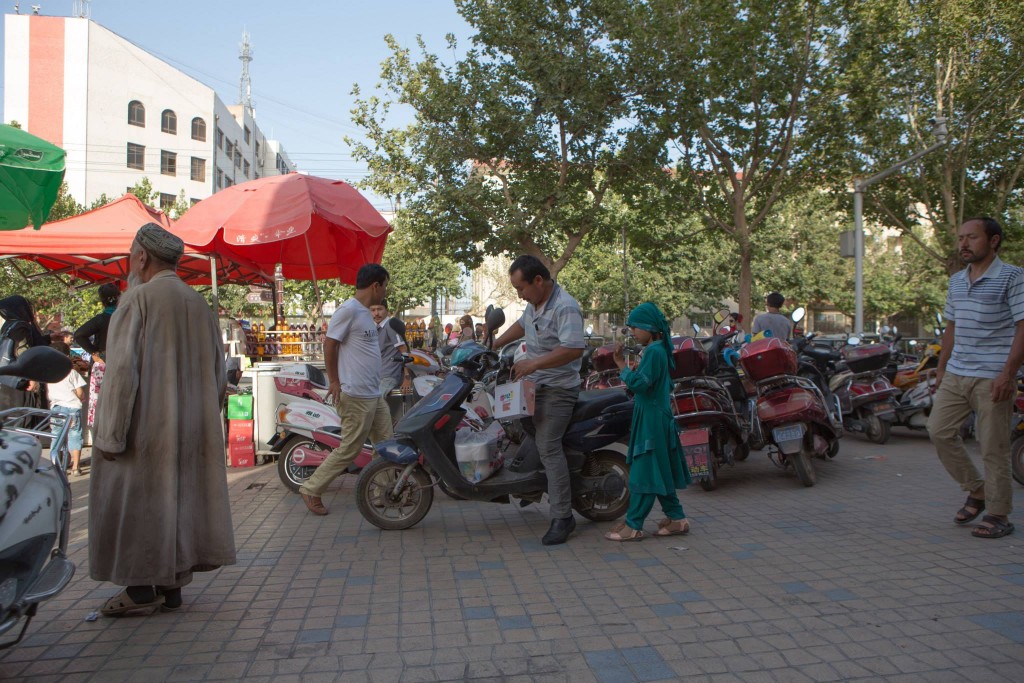
Beyond government, religious trends have pulsed and convulsed the city throughout the millennia. It was during the Mongol period that the Uighurs living there today began their conversion to Islam, and today, almost every Uighur is a Sunni Muslim. However, that has not always been the case. Before Islam came to dominate Kashgar in the fourteenth century, Buddhism was the city’s major religion, passing from here onto Turpan and the rest of China. Nestorian Christianity also had a presence in the ancient city.
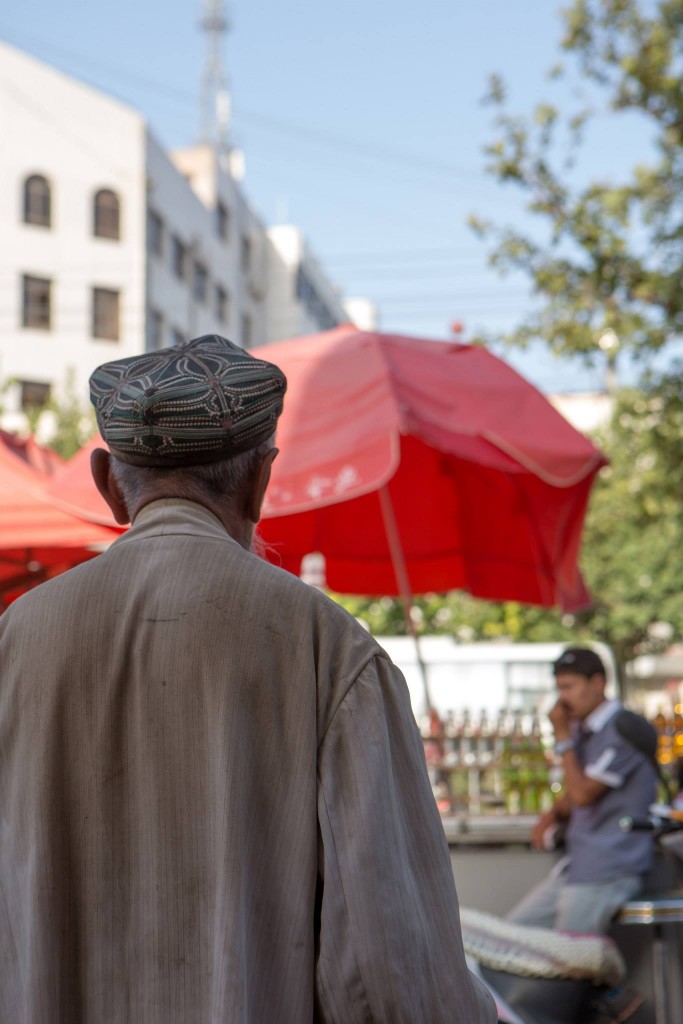
Kashgar has been fought over for a long time. That is still true today. No one questions that it is a part of the People’s Republic of China, but few believe it is Chinese. Walking through its bazaar, you feel more like you are in Baghdad than Beijing. Often, it was difficult for me to find people who could speak Chinese, particularly among cab drivers. Han Chinese, when they do appear, look like, and often are tourists, sticking out just as much as Galen and I do amidst the sea of Uighur faces.
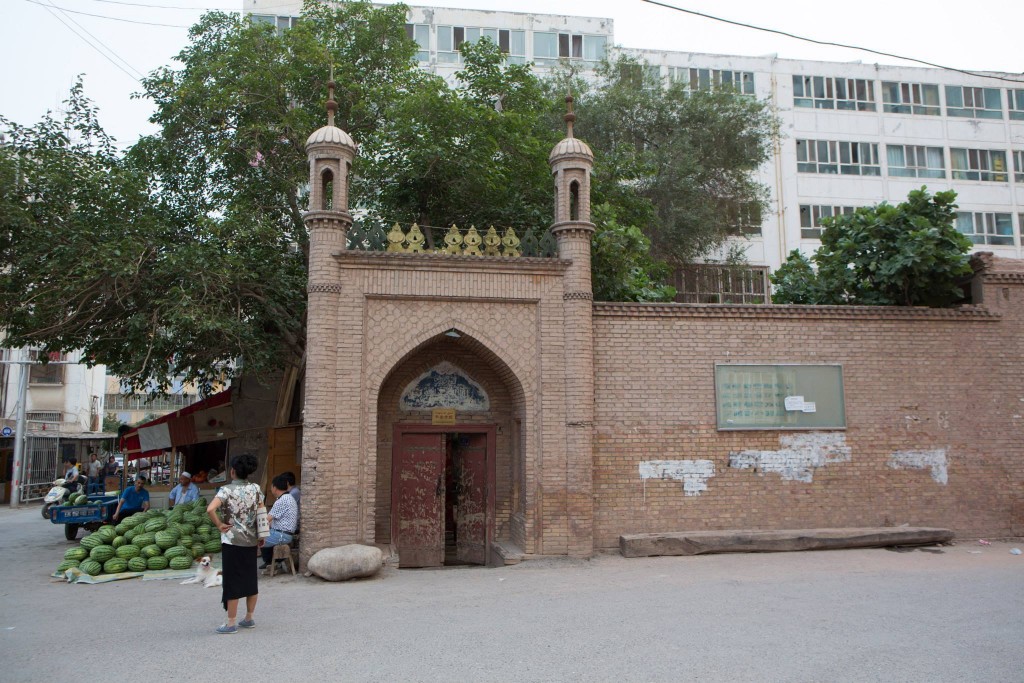
In some ways, China’s grip on the region is strong, stronger than it has ever been at any time in history. China maintains a heavy security presence in Kashgar, and any military challenge to Beijing’s authority would be suicidal.
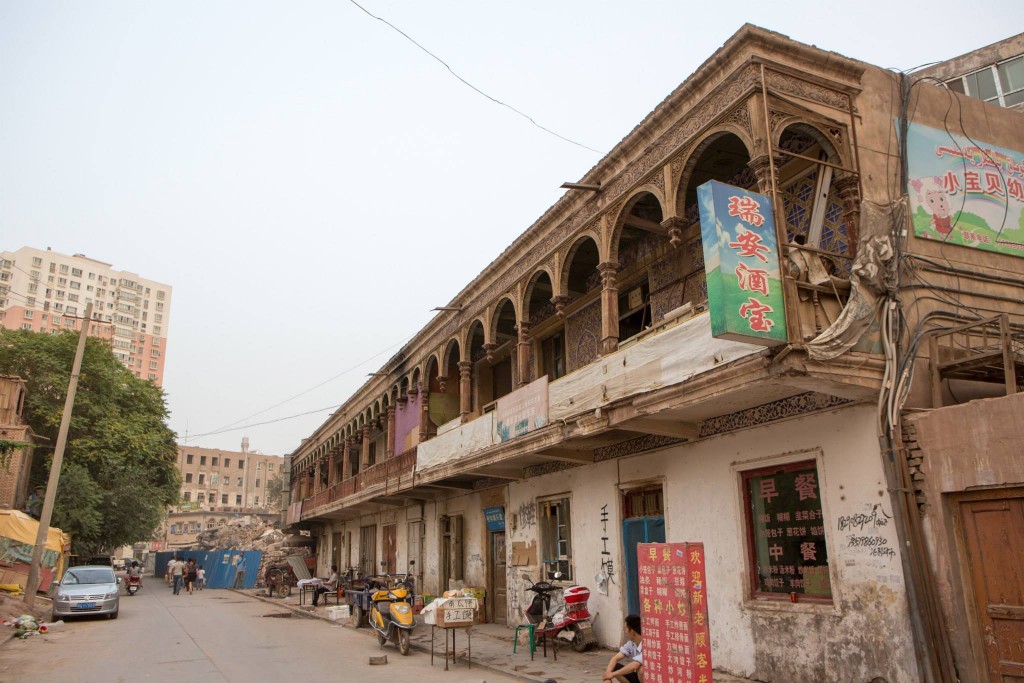
Yet, politically, China is losing the battle for hearts and minds. Uighurs see themselves less and less as a part of China. Though they have long been Muslims, they have never been particularly conservative, drinking, smoking and generally carousing. However, there is now a movement to define themselves as Islamic, partially as a response to Beijing’s heavy-handed tactics, as a way to distinguish themselves politically from Beijing. As an American, visiting Kashgar left me hearing echoes of Boston in the 1760’s.
